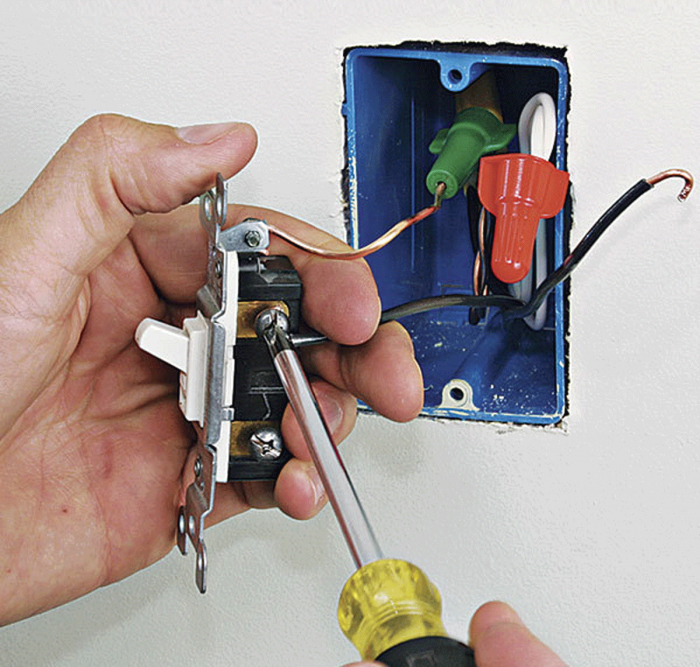4 Worry-Free Wiring Repairs
Focus on accurate wiring when replacing faulty outlets, switches, and fixtures.

Synopsis: For nonelectricians, wiring repairs can be dreaded tasks. With the help of electrician Brian Walo, however, even beginners can consider tackling a few basic wiring repairs. Walo cautions that working with electricity can be dangerous and that it is important to be patient and to follow a few simple rules. The four projects Walo outlines are replacing an outlet, replacing a single-pole switch, replacing a three-way switch, and replacing a light fixture. This article includes numerous diagrams as well as sidebars in the PDF below about working safely with electricity and tips for trouble-free wiring.
When I tell people that I’m an electrician, they always say the same thing: “I’ll do anything but electrical work.” It’s true that working with electricity can be dangerous, but so can working with power tools or even a kitchen knife. The keys to being safe are following a few basic rules and knowing something about the fundamentals of electricity. Whether you’re replacing a broken switch or outlet or updating a fixture, the procedure is basically the same provided you can follow a few simple rules and pay attention to detail.
It also helps to know a little about electricity itself. The fundamental electrical concept that guides my work is that of the circuit. At its most basic level, electricity flows in a circle. A battery is a good example. Batteries have a positive and a negative terminal an “in” and an “out” if it’s easier to think of it that way. Looping a wire from one terminal through a lightbulb and back to the other terminal completes the circle and lights the bulb. Transfer that idea of a circular path to your home wiring, and you’ll have a much easier time making sense of any repairs you need to make.
Home electricity at a glance
The conductor (wire) that supplies power to a switch, socket, or lamp is called the “hot” or “in” side of the power supply. It’s typically a black or red wire and is a constant power source coming from the electrical panel to outlets, switches, and lights.
A hot conductor must be paired with a neutral conductor (wire) to make a complete circuit. Neutral conductors are generally white or gray and constitute the “out” portion of the circle. If you look at an unplugged lamp, you can trace the path of electricity from the small end of the plug (hot/in), through the switch, through the bulb, and back to the large end of the plug (neutral/out). What this means is that every circuit in your house is really just a circle of energy.
Most residential electrical systems installed in the past 50 years also include a grounding conductor or ground wire. This additional wire helps to safeguard against electric shock or fire in the event of an electrical fault (any unintended discharge of energy, as when a loose wire contacts metal) by channeling that excess energy back to the ground and/or panel, where it should trip the breaker or blow the fuse. Grounding wires are generally bare or sheathed in green insulation and are not intended to carry electricity unless there is a malfunction. Never use a grounding wire in your home as a hot or neutral conductor because this incorrect usage presents a serious shock hazard.
Safety First-and Last
Now that I’ve covered the basics of how the system works, let’s talk safety. I joked earlier about people’s fears of electrical work, but in reality, a little fear is a great thing. My fear of electricity helps me to maintain a healthy respect for the systems I work on, and your fear will help to keep you safe by alerting you to potential hazards.
For more photos and details on wiring repairs, click the View PDF button below.
From Fine Homebuilding #206





